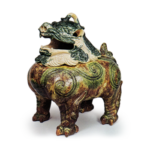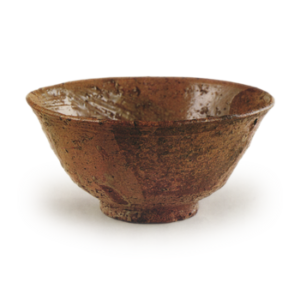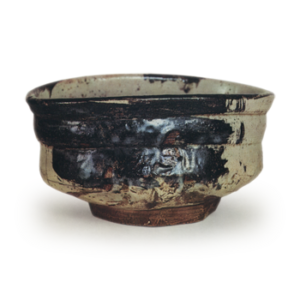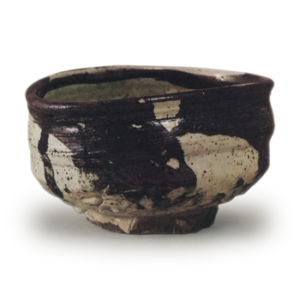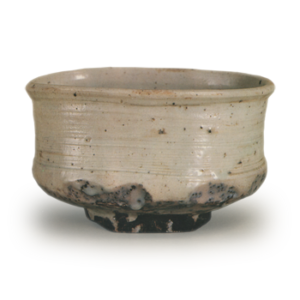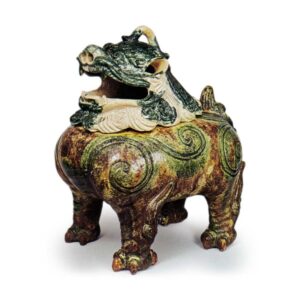
Height 27.3cm, Bore 8.9cm x 12.9cm, Left and Right 23.4cm
Umezawa Memorial Museum
This incense burner is also one of the most important pieces in the study of early Raku ware, due to the engraved inscription on the abdomen. The inscription on the abdomen reads, “Toshiroku 60 Tanaka Tenkaichi Sokei (flower seal) Bunroku 3 (4) September, Yoshinichi. Although Sokei is completely unknown to those who recognize the Raku ware lineage as Chojiro, Tsunekei, and Doyuri, Tanaka Sokei seems to have been a rather important figure in Raku ware before Tsunekei.
As this engraving indicates, he was 60 years old in Bunroku 4, and he was also known as the best potter in the world. The existence of Sokei had been completely forgotten, but in a memorandum between Iriki and Soiri published by Raku Kichizaemon XIV, Sokei is mentioned as the father of Jokei and Soami, and in an inscription by Daitokuji monk Haruya Soen on an image of Rikyu by Hasegawa Tohaku that was handed down from the Shushin-an hermitage, he says, “Rikyu was a follower of Haruya Soen, who was a great master of the art, In addition, in the inscription of the praise of Soen Haruya, a monk of Daitokuji Temple, for an image of Rikyu by Tohaku Hasegawa, which was handed down in the Shushin’an, it is written that he wrote this praise at the request of Sokei Nobuo, who followed Rikyu. If this is the case, it suggests that he had a close relationship with Rikyu. In the fourth year of Bunroku, after the death of both Rikyu and the first Chojiro, Sokei probably played a central role in running the kiln of Juraku-yaki, or Chojiro-yaki. Of course, Sokei probably made not only incense burners but also tea bowls, but there are no tea bowls known to have been made by Sokei. However, as already mentioned, there are tea bowls with the exact same mark as that on the chest of this lion incense burner, as shown in Figs. 49, 51, and 53, which can be considered to be made by Sokei. However, this seal was probably not used only by Muneyoshi, but may have been shared by those who were involved in koraku, such as Chojiro, Muneyoshi, and his sons, Soami and Tsuneyoshi, as the seal of Tenkaichi Juraku ware (Chojiro ware), so it cannot be ruled out as a Muneyoshi work just because this seal is affixed. It is also possible that this mark was given by Toyotomi Hideyoshi. What is even more interesting is that this incense burner is glazed with both green and brown glazes, a technique that is clearly in line with the so-called “koji-yaki” technique, which was fired from South China to the Koji-shina (Vietnam) area. This is different from the theory of Mr. Isono and others who believe that Ameya was a naturalized Korean, but it clearly shows that the style of Raku ware was derived from Kojiji ware.

